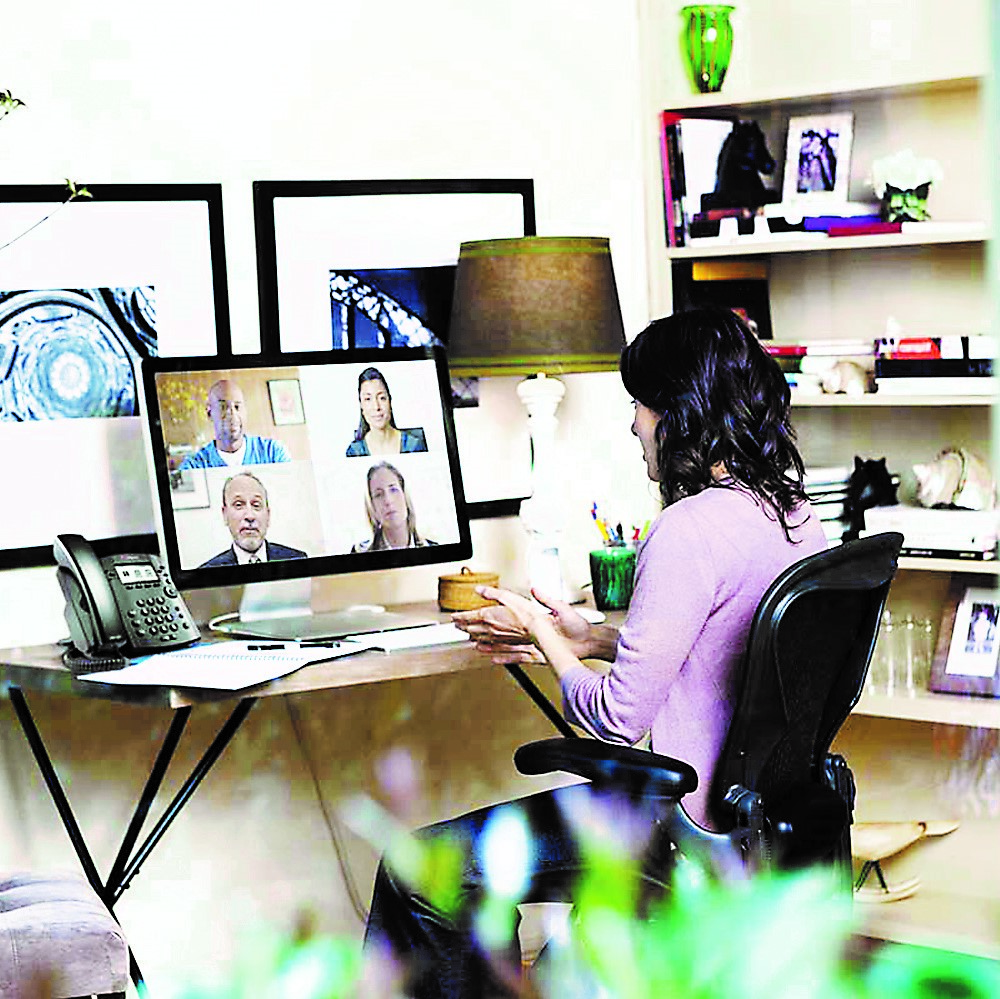
Featured Item

Home sweet office – a winning combination
Published
4 years agoon
Once a hot commodity, office space is fast becoming the exception rather than the rule. COVID-19 may have sparked the shift to home offices, but it’s the convenience and increased efficiency they offer that’s giving them their staying power.
“Among our 30 staff, the preference for working from home is resounding,” says Justin Lipshitz, the chief executive and founder of tech company Axon Wireless. “Employees are getting more work done, they’re no longer frustrated and delayed by traffic, and they’re spending more time with their families.”
Providing software and devices to create a more secure version of RICA (sim-card registration) around the world, Axon Wireless has always had a flexible working environment. “We’ve never had full-time remote working though,” says Lipshitz. With lockdown, working from home became essential and it’s been so successful the company has given notice on its offices. “I didn’t consider this before because I didn’t think it was possible. Now it’s happened naturally, everybody is doing it, and it works. The environment was right.”
Many echo his sentiments. “Our average client now thinks they won’t go back to an office after the pandemic ends,” says organisational psychologist Yael Rosen, the co-founder and director of Ferva and My Feedback Guru. Together with her team, Rosen partners with businesses to sustainably manage their human resources functions.
“Some who need offices to work as effectively as possible have put only extreme skeleton staff there while the rest of their staff work from home,” she says. “Remote working has definitely become more normal. Like many of our clients who were renting office space, we have cut leases. We don’t believe we’ll go back to an office this year, and after that an office space will look different.”
Rosen thinks there will be a mixed approach to the workplace. “Paying a significant amount to lease a permanent workspace is unlikely to define the future world of work,” she says. “We’ll probably rent out a shared working space where the team gets together twice a week to collaborate and share knowledge. That would be the space where we’d grow and learn together, but we’d be at clients the rest of the time. If they’re not at an office, we’ll work with them remotely. Our clients have similar sentiments in terms of how they’ll run their businesses.”
Technology is key to running a business remotely. “We’ve been using Google’s G Suite tools for more than ten years,” says Lipshitz. “We use Google Meet, we’ve set up Google Sheets, there’s a tab for each person, and we can all see what anyone is working on at any time.”
Remote working has also forced chief executives to interact more effectively with their teams, says Rosen. Yet they need to resist the temptation to micromanage. “When we went into lockdown, I was forced to connect far more frequently with my team because I wouldn’t see them at the office coffee station,” she says. “This created a far more connected experience. In the beginning, we were probably spending too much time trying to touch base, but now we’ve found a balance between when to connect and when just to get on with our work.”
In a remote working environment, chief executives also worry about the ability of their teams to collaborate. Says Michael Rubenstein, a business coach and the co-founder of The Resilience Lab, which offers strategic communications and marketing services, “The collaboration space is really important now, and embracing things like Microsoft Teams is helping to address the need for people to work closely together because not everyone likes to work individually. That way they’re not completely removed from the ecosystem.”
Trust in such an environment is also crucial. “We’ve always had a strong business and work culture, and we put emphasis on our hiring, so we trust our people, which helps,” says Lipshitz. For staff who miss the social aspect of work, Lipshitz hopes to find a balance. “When things clear up, we’ll meet once a week or so, go for breakfast or hire a boardroom. You can incorporate that.”
Meeting clients has also now become a far more streamlined process, says Lipshitz. “Meeting online via platforms like Zoom, which before was socially unacceptable, is the order of the day. Even bigger companies are enjoying it. Meetings actually run on time, and we cut out travel time.”
The fact that remote working is a global consequence of COVID-19 also makes it easier to connect with clients around the world, he says, eliminating the need for a five-day business trip for a one-hour meeting. “We recently pitched for a tender in Myanmar via Zoom, and because we had much more time to prepare, our presentation was much better.”
That’s not to say the shift to working from home hasn’t been challenging. “Finding the balance in the juggle between managing work and home life was particularly difficult during the first few weeks of lockdown, especially for working parents,” says Rosen. “The irony that we’ve observed five months later is that families have found their groove to such an extent, there’s now anxiety about the possibility of going back to the office. They’ve found security, a support structure, and a routine that effectively works for them.”
This came about with a change in mindset. “Human beings under stress gravitate most strongly towards their natural preferences and competencies,” says Rosen. “In the beginning of lockdown, that meant that the amount of change and uncertainty led to heightened anxiety. Now the adjustment has happened. It took some time, but psychologically people have had to rethink what they want out of work and life. For different people that means different things. Many have had the realisation that life isn’t just about work. Finding some kind of work-life balance is really important.”
Yet, attaining this balance in this new normal is challenging. While productivity has increased due to the elimination of travel, says Rubenstein, such productivity is also often associated with stress because people don’t know how to take time out. “Employers have to encourage people to take breaks. Because we’re so caught up in busyness, we don’t have time to think. So how are we able to create? Companies need to find a balance between productivity and mental well-being for themselves and for their employees.”
What are the long-term implications of working from home? There’ll be more emphasis on speedy broadband, says Lipshitz. Virtual reality may also be accelerated. There’ll also be a lighter carbon footprint. Office real estate will have to evolve, as will industries built around business travel.
The most fascinating part of the shift to remote working is that it changes the world of work for South Africans, says Rosen. You are no longer limited to consulting within your own country as the need to do business face to face evaporates. “Service businesses like mine can now tap into an international market where South Africans are highly valued and seen as experts in their fields,” she says. “International clients can get the same services at a significantly better rate.”










